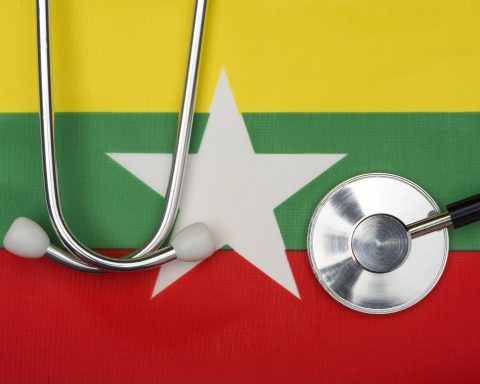Simon Thornton is a GP Engagement Lead at the Centre for Academic Primary Care at the University of Bristol, and a GP Partner at Pioneer Medical Group. He is on Twitter: @thorntonsr
At long last, UK medical students are rightly spending more of their course time in general practice settings, where the large majority of NHS consultations take place. The downside of this improvement is GP teachers in medical schools across the UK have faced increasing difficulty in placing students in primary care settings. Capacity for undergraduate GP placements is a serious challenge and one that is predicted to become harder due to a combination of factors:
1. Reduced supply. NHS general practice was under significant pressure before COVID-19, with staff shortages in many areas. These pressures have worsened over the last 2 years during the pandemic. In 2022, there were 1595 fewer full-time equivalent (FTE) GPs in England than in 2015.1 The increased pressures faced by GPs can result in less time dedicated to teaching. Furthermore, in my experience, the emergence of new ‘super practices’ results in organisations that are less engaged in undergraduate training. There is increased competition for placements from the Foundation Programme, postgraduate GP placements, and trainees from other disciplines including pharmacists, nursing students, and physicians associates.
Capacity for undergraduate GP placements is a serious challenge and one that is predicted to become harder …
2. Increased demand. In many medical schools, the amount of curriculum time spent in general practice is planned to increase.2 While we view this as overwhelmingly positive, it has resulted in the creation of curricula that in some cases have been undeliverable. This is combined with significant increases in medical student numbers over the last few years3 and the emergence of new medical schools. Furthermore, there is a proposed increase in medical student numbers by the Medical Schools Council from 9500 to 14 500.4
A national working group has been set up to investigate the issue of teaching capacity in general practice across the UK, working closely in collaboration with the Heads of Teaching, a subgroup of the Society for Academic Primary Care, to propose workable solutions. The group has broad representation from the UK’s medical schools, including the devolved nations, and are looking into a number of ways that we can better understand why practices do not teach medical students, and what we can do to better support them and more effectively coordinate the recruitment efforts of the different medical schools across the country. Our initial meeting has generated a series of ideas that we are keen to develop further.
Can we create an interactive map of all teaching practices across the UK?
In the South West, the Bristol, North Somerset and South Gloucestershire (BNSSG) clinical commissioning group (CCG) business intelligence team have created an interactive map of teaching practices for the University of Bristol. It includes data on all practices in the region, primary care network (PCN) boundaries, and the amount of undergraduate teaching delivered.
Creating a national map of all teaching practices could enhance collaborative working between universities to target pockets of ‘untapped’ practices. The aim would be to have a shared, interactive map, updated annually that shows all teaching practices along with a measure of the amount of teaching that they are delivering.
… a national map of all teaching practices could [help] target pockets of ‘untapped’ practices.
Explore why practices don’t take students
We discussed a survey exploring why practices don’t teach medical students. While we recognise that there are many things that we can do to improve recruitment and retention,5 we are interested in exploring barriers to teaching and in particular whether those previously identified6 have changed in the post-COVID-19 era.
Create promotional material that can be shared by all
We considered working collaboratively to produce promotional material, particularly to engage the ‘untapped’ practices. This could be a video or even a recruitment website that could, for example, pair locum GPs with practices that have space for them to teach. Example videos we highlighted were the recruitment video created by Bristol7 and the Royal Australian College of General Practitioners video.8
Sharing tips and tricks
As a group of individuals, we consider ourselves to have expertise in GP recruitment and have experience of what works and what doesn’t. Publishing in GP journals and forums allows us to share our experience but importantly to learn from those who write back in response.
Why is there variation in postgraduate training support for undergraduate teaching?
From our discussions we realised that there is a difference in the approaches from deaneries to undergraduate teaching. Some deaneries have advised that their trainees are unable to do any undergraduate teaching whereas others have been very supportive, including introducing integrated training posts (ITPs) in undergraduate teaching. We plan to directly approach the deans in each of the 14 training areas to better understand this variation.
Our working group is meeting virtually every 2 months to develop these ideas …
Travel times to teaching practices
We recognise that travel to practice is a perennial problem. Different universities appear to have different policies, with some asking if students have cars and others not, and some stipulating a maximum travel time from 30-60 minutes. Median travel time between a school and a teaching practice is 41 minutes by car.9 From a practical point of view it would be interesting to know what each university’s travel policy is and to create a way of mapping travel times from different universities to practices.
Our working group is meeting virtually every 2 months to develop these ideas and share the highs and lows of the rollercoaster of striving to provide high-quality primary care placements for all medical students in the UK in an increasingly challenging environment.
The challenge
Allowing students to experience real holistic and generalist medicine throughout the student years is an important way to promote our specialty and improve recruitment. What do we need to do to encourage more practices to take students? What are the real barriers to GPs and their practices taking more of our students? This is a challenge to all of us as GPs.
References
1. British Medical Association. Pressures in general practice data analysis. 2022. https://www.bma.org.uk/advice-and-support/nhs-delivery-and-workforce/pressures/pressures-in-general-practice-data-analysis (accessed 23 May 2022).
2. Cottrell E, Alberti H, Rosenthal J, et al. Revealing the reality of undergraduate GP teaching in UK medical curricula: a cross-sectional questionnaire study. Br J Gen Pract 2020; DOI: https://doi.org/10.3399/bjgp20X712325.
3. General Medical Council. The state of medical education and practice in the UK. 2021. https://www.gmc-uk.org/-/media/documents/somep-2021-full-report_pdf-88509460.pdf (accessed 23 May 2022).
4. Medical Schools Council. The expansion of medical student numbers in the United Kingdom. 2021. https://www.medschools.ac.uk/media/2899/the-expansion-of-medical-student-numbers-in-the-united-kingdom-msc-position-paper-october-2021.pdf (accessed 23 May 2022).
5. Alberti H, Atkinson J. Twelve tips for the recruitment and retention of general practitioners as teachers of medical students. Med Teach 2018; 40(3): 227–230.
6. Barber JRG, Park SE, Jensen K, et al. Facilitators and barriers to teaching undergraduate medical students in general practice. Med Educ 2019; 53(8): 778–787.
7. Thornton S. Join our community of GP teachers. 2017. https://youtu.be/45yOBJsYm9w (accessed 25 May 2022).
8. TheMumboReport. Royal Australian College of General Practitioners cinema ad. 2015. https://youtu.be/VD_xh428Fq0 (accessed 25 May 2022).
9. Derbyshire H, Rees E, Gay SP, McKinley RK. Undergraduate teaching in UK general practice: a geographical snapshot. Br J Gen Pract 2014; 64(623): e336–e345.
Featured photo by Jungwoo Hong on Unsplash.








